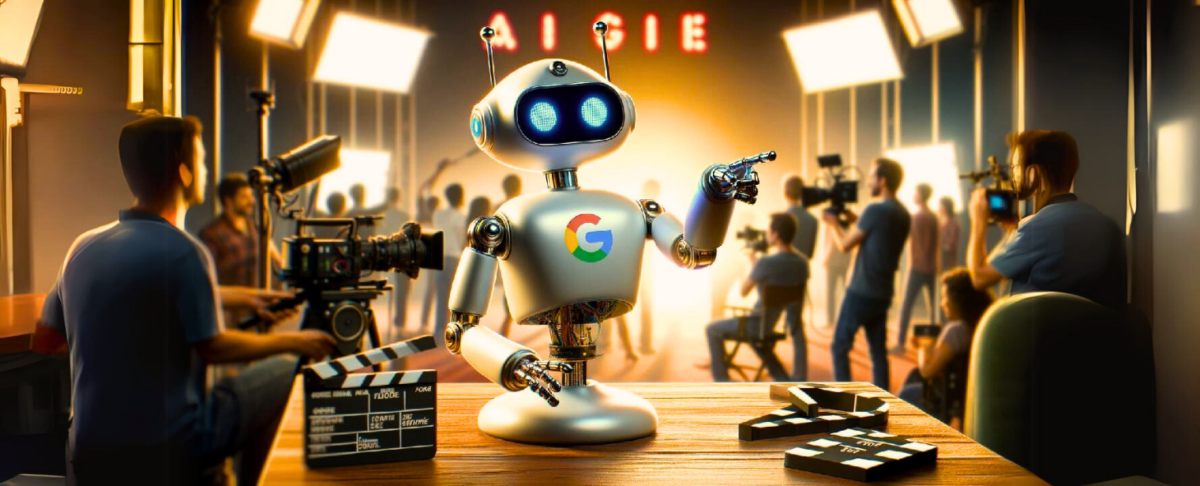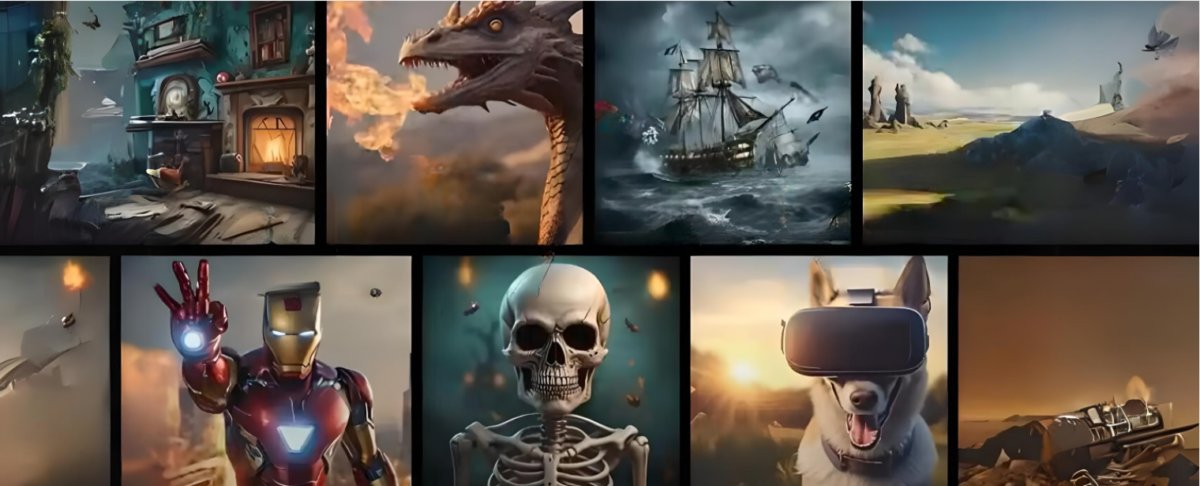Introduction of Google Lumiere

Introduction
“Lumiere is a text-to-video diffusion model designed for synthesizing videos that portray realistic, diverse, and coherent motion.”
Google has introduced its latest multimodal AI Lumiere which gives high hopes to content creators around the world. Though it’s currently in the development stage, a sneak peek shared by Google about the AI model seems extraordinary. In this blog, I am going to share some very interesting and phenomenal facts about Lumiere that you will find very useful if you are a creator or an AI enthusiast.
Explaining Google Lumiere in a simple way
You can think of Google’s new AI tool as a magical video creator who also loves to craft stories. You can give it your prompts like a story and it can create a video out of it consisting of realistic pictures moving together.
“Lumiere creates 5-second videos in one process instead of putting smaller still frames together.”
Lumiere uses its unique features as special tricks to make videos look more lively and realistic. Whether it is a cat playing the piano or a turtle cruising underwater, it can create realistic videos within seconds.
Why it stands out
“With Lumiere, Google AIms offer global temporal consistency ensuring coherent representation across different frames.”
Lumiere is said to be working on a special model called, Space-Time-U-Net or STUNet. Look at the breakdown:
Space: STUNet is responsible for figuring out where images will be in a video, it manages the spatial aspect.
Time: STUNet is also able to justify how things will move, when a picture comes next to another one, making the visuals change over time in coherence.
U-Net: This part tells the AI to put everything together so that pictures can move in smooth motion.
With this innovation, Google ensures videos look realistic with every object seeming to be at the right place at the right time and no missing parts in a video remain unfixed.
Understanding the space-time-diffusion model for video generation

The space-time diffusion model is the secret sauce in Google’s new AI tool’s quick video-making recipe. The “space-time” refers to where the objects are (Space) and how they change in a proper flow (Time).
The diffusion model is a unique way of scattering things out smoothly. In the context of text-to-video generation, it refers to transforming the text into a video by spreading out the visual elements in a proper sequence.
This makes the video look more visually appealing. The pictures seem to diffuse or spread across the screen like a natural flow instead of changing abruptly. The video creation process has become so seamless that creating slick movies in Hollywood style is an easy task now.
Lumiere vs. other AI video tools

Let’s take an example of making a video like a flipbook. Most video-making AI tools out there do it page by page similar to drawing each scene separately at a time.
On the other hand, Lumiere draws the entire flipbook all at once to make sure every object in the video fits together smoothly, making the visuals more connected like a story, unlike popular AI video generators like Pika and Runway and Meta’s Emu.
Here we can stack Google’s Lumiere up against other AI video generator tools. Now stating briefly what Lumiere can do;
Lumiere can create 80 frames per video together. (Other AI tools can only handle 25 frames)
Lumiere can understand text prompts, images, and short video clips as input, offering greater flexibility and promoting creativity by blending numerous styles.
Lumiere’s Space-Time-U-Net model takes care of the spatial and temporal aspects of objects in a video, ensuring visuals move smoothly.
It also lets you edit the generated video clips in real-time, promoting customization during the production process.
How Google Lumiere works: easy steps
Let’s get hands-on imaginary experience as of now;
- Give it a prompt: Lumiere will start working on your input prompts. Write as much detail as you can in order to describe what exactly you want it to generate.
- STUNet model starts working: After entering the prompt, Lumiere will utilize its unique STUNet model to anticipate the position of the objects and predict how they will move one after the other in the generated video frame.
- Flowing frames: Lumiere will generate more imaginary frames to fill the gaps so that objects look like transitioning into each other seamlessly in the output video.
Features of Google Lumiere

“Introducing Lumiere
The new video diffusion model we’ve been working on @GoogleAI
* Text-to-Video
* Image-to-Video
* Stylized Generation
* InpAInting
* Cinemagraphs
and more ”
Breaking down key features of Google Lumiere :
Text to video generation:
- Give it a text prompt that describes a scenario and Lumiere can make a visually appealing video out of it.
- It understands natural language texts, which helps you share a nuanced description critically.
- Generates videos in incoherent motion.
Image to video generation:
- Give it an image input and Lumiere will breathe life into it.
- Lumiere can animate specific regions of a static image, keeping the rest of the image still. This is also called Cinemagraphs.
- It also can apply specific styles like painting, origami, and different themes to the generated video.
Video-to-video editing:

- Provide Lumiere with a short video clip as your input and watch it conjuring up a new video with its magical edits.
- It can change the camera angle, position of the objects, and even style or theme within the input video.
- It also offers real-time preview while editing, allowing customized and more interactive edits.
Multimodal fusion:
- You can provide a combination of text, picture, and video input for complex and enriched output.
- It can perform according to blended styles, concepts, and themes together.
- Can create videos in a unique storytelling format and merge real-world images with imaginary ones.
High resolution and frame rate:

- Generates videos with a higher resolution of 1024×1024 pixels.
- Creates 80 frames together at a time for a single video.
- Results are more visually appealing and realistic.
How Lumiere will benefit creators
In the domain of text-to-video creation, Google’s latest artificial intelligence video generator, Lumiere, marks a revolutionary step forward. Through the use of the Space-Time U-Net architecture, Lumiere can generate complete videos in one go. It provides a motion that is both realistic as well as consistent. This technique differentiates Lumiere from other AI models that are currently in use, such as Runway or Pika, which have difficulty retaining consistency.
If you are a creator, you are going to gain major benefits from Lumiere’s capabilities. Contrary to the normal 25 frames, the unique diffusion model enables the creation of 80 frames. As a result, you will be able to generate videos that are more cinematic and detailed than that of the standard 25 frames. The fact that Lumiere is so good at simulating authentic animal motions highlights the AI’s potential for producing content that is both realistic and engaging.
Lumiere offers a variety of features to you in addition to the development of text-to-video. Its potentials include the creation of images-to-video, the creation of stylish videos, cinemagraphs, and watercoloring. Creators like you will have an easier time producing material that is both diversified and visually appealing as a result of this AI.
The potential of Lumiere to customize videos locally by utilizing masks is one of its most notable features. This feature makes it easier for the creators to make particular modifications, such as changing clothes, or simply giving a written explanation, which streamlines the process of post-production. The appealing functions of Lumiere indicate a future in which AI-driven video generation will become an important element of content development processes. Although Lumiere is not currently accessible for testing, its strengths hint at a thriving future where generating high-quality video content within a few clicks.
Current status of Google Lumiere
Google Lumiere is a big step forward in AI video creation since it offers realistic movements and plenty of different content choices. Lumiere uses the Space-Time U-Net framework to make whole videos that play smoothly in one pass. Though it’s not yet available for testing, its cutting-edge features, such as the ability to turn images into videos and edit videos locally using masks, indicate that they will completely change the way content is developed. Lumiere will be able to help creators a lot by making animations smoother and moves more like real life, as well as making editing processes easier. Google is making great progress on Lumiere, which can become a huge deal in the field of AI-powered video creation.
Conclusion
In closing remarks, I can assure you that Google Lumiere stands at the forefront of AI-driven video creation, revolutionizing the domain of content generation with its Space-Time U-Net architecture. Despite being in the development stage, Lumiere promises the creators a realistic motion, diverse content options, and streamlined editing capabilities that will take the process of content creation to the next level.
Its ability to create 80 frames in one process differentiates it from other AI tools, making it a game-changer for passionate creators who seek cinematic and detailed videos. As Google continues to refine Lumiere, it possesses the potential to reshape the landscape of AI-powered content creation. If you are an aspiring creator, I can advise you to have high hopes and a keen interest in learning how to use Lumiere as soon as it’s officially launched for public use.
FAQs
1. What is Google Lumiere?
Google Lumiere is one of its kind AI video generation tool that works on the space-time diffusion model. Lumiere can synthesize videos that portray realistic and coherent motion, eliminating every gap to prevent the visuals from appearing abruptly on screen. Lumiere creates the entire video just like a flipbook in one go. It can interpret text prompts, static images, and video clips as inputs.
2. Is Lumiere the future of video making?
Potentials of Lumiere promise a future where a lack of technical knowledge will not block the way of creativity. Without learning to use editing software, you can generate professional videos within seconds by just typing in-detAIled prompts. It is no doubt, that Lumiere will replace many AI video tools once it is released.
3. What are the key features of Google Lumiere?
Google Lumiere has features like text-to-video, image-to-video, video-to-video editing, multimodal input features, and the creation of high-resolution videos.
4. Is Google Lumiere available to use now?
Google Lumiere is not currently available for the public to use as it is still under development. Google’s commitment to refine the model further, indicates the availability of Lumiere in public for beta testing. Keep an eye out to get your hands on this futuristic innovation as soon as it gets released.

